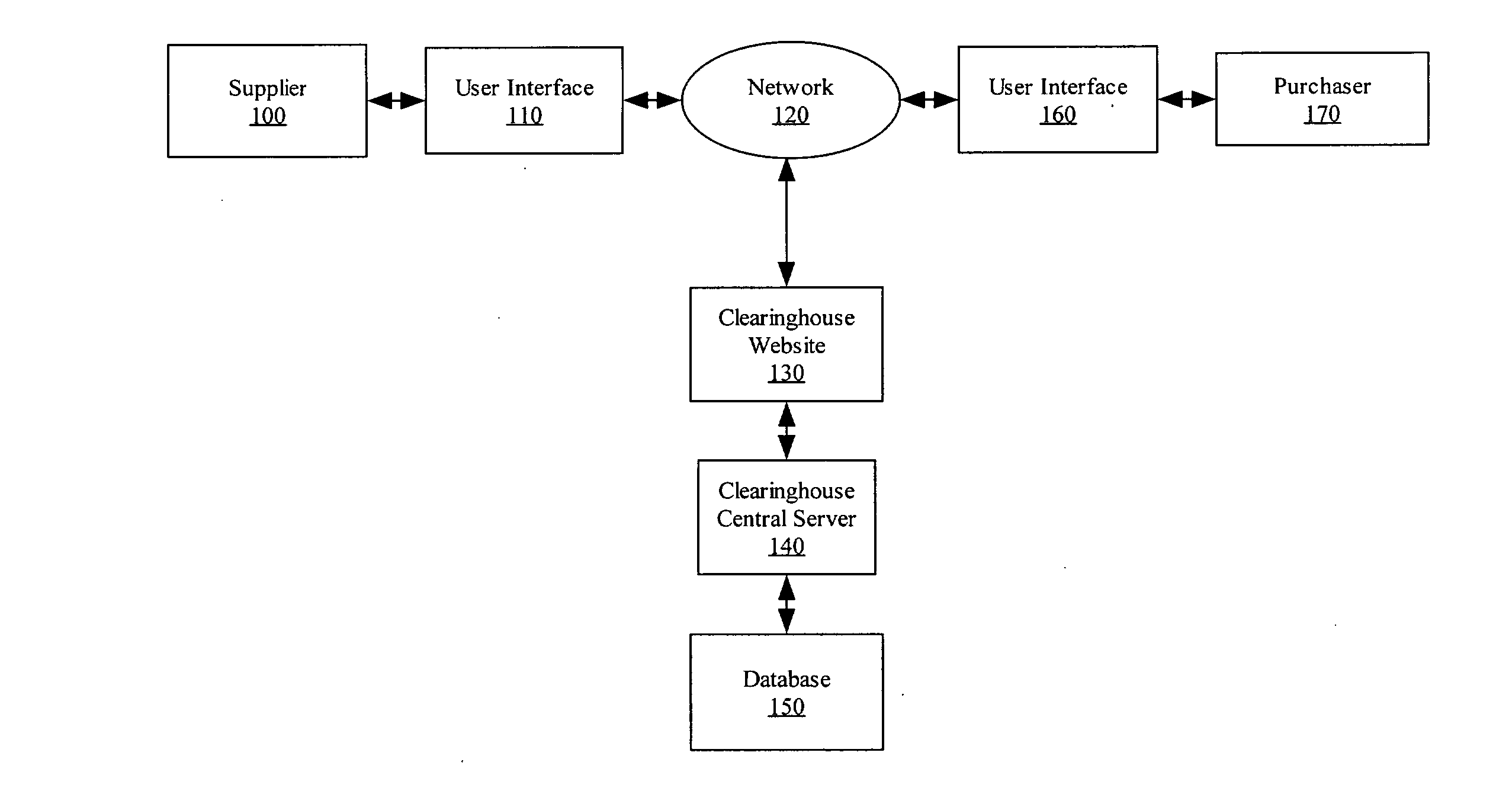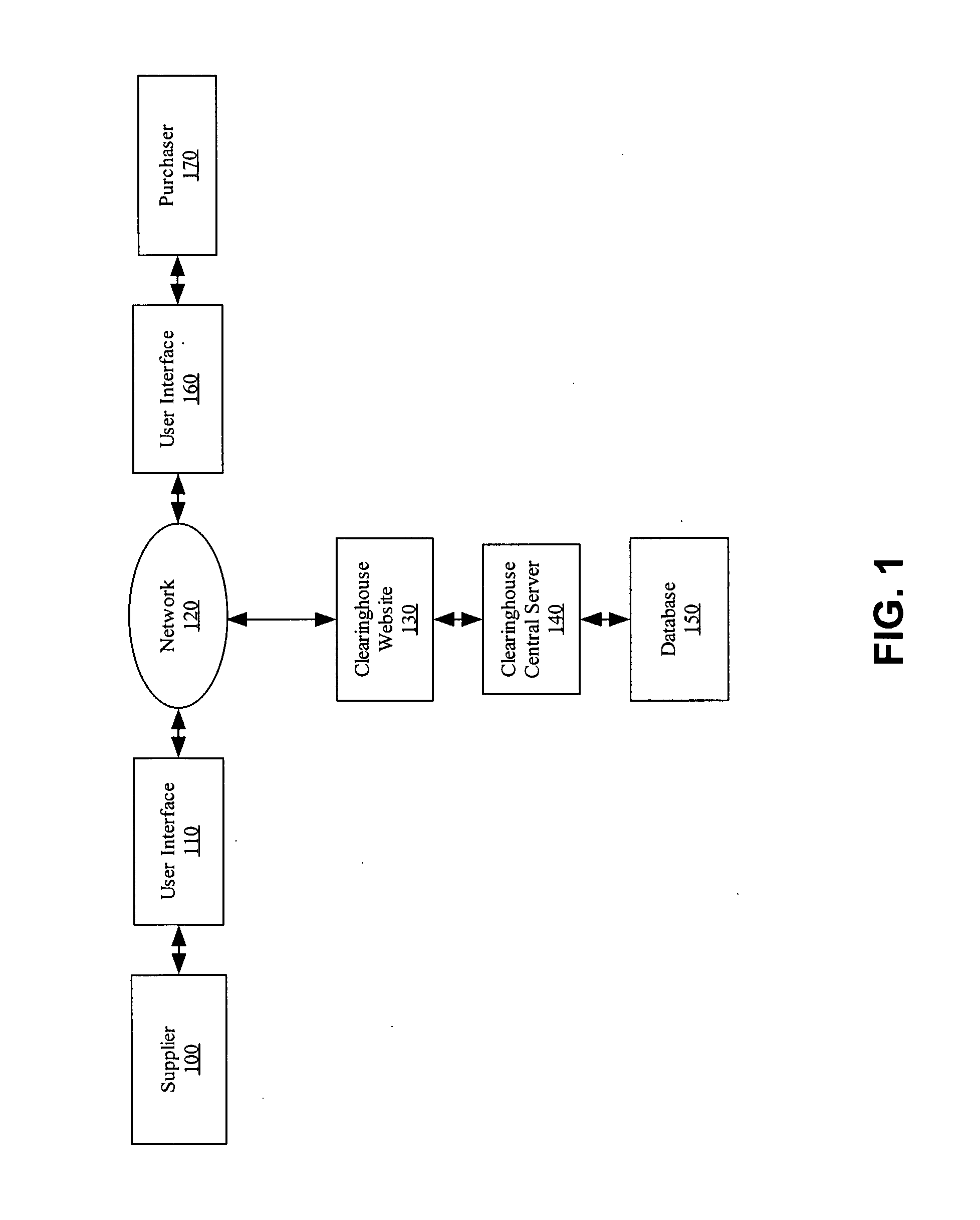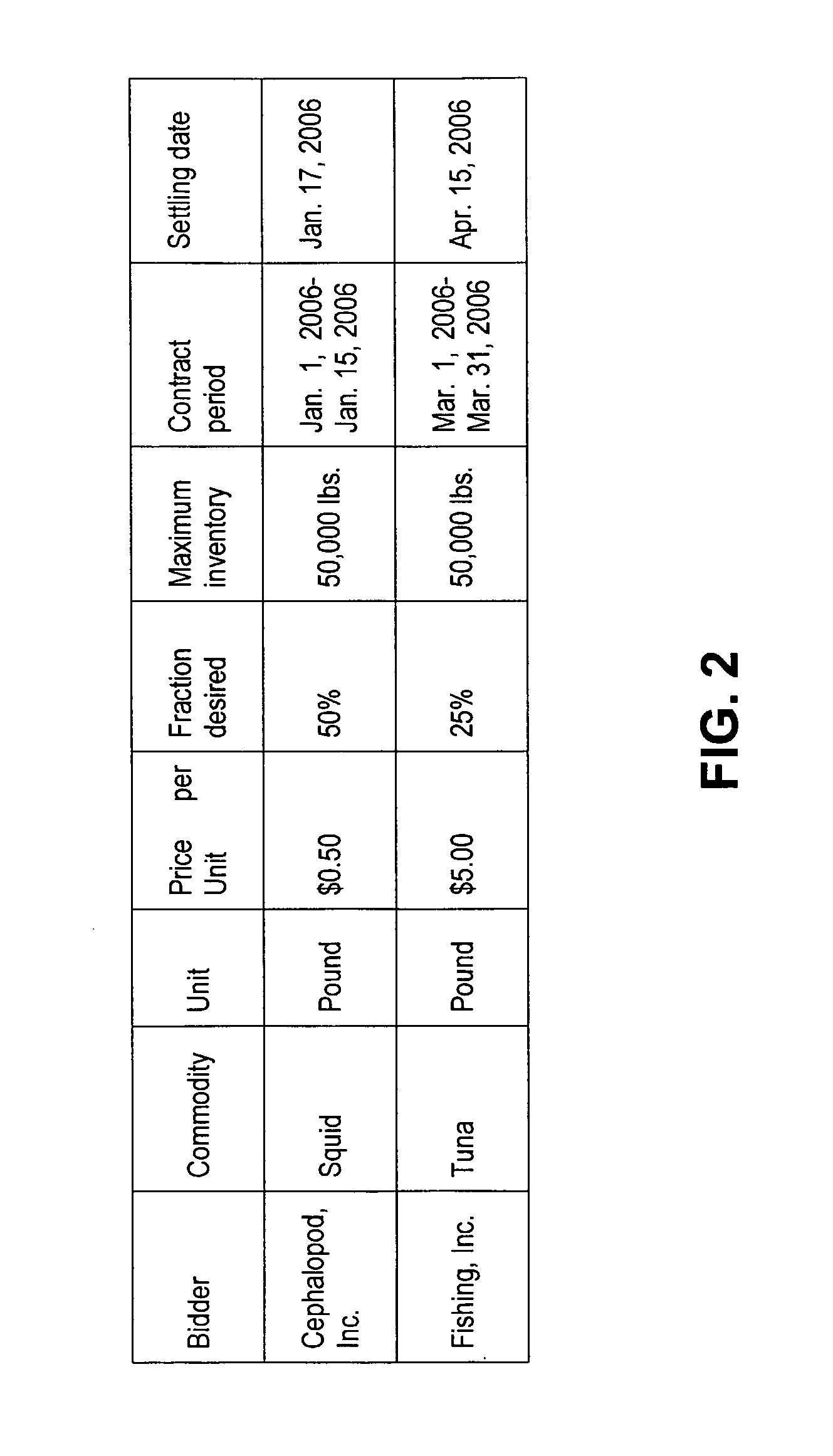Method for Managing Markets for Commodities Using Fractional Forward Derivative
- Summary
- Abstract
- Description
- Claims
- Application Information
AI Technical Summary
Benefits of technology
Problems solved by technology
Method used
Image
Examples
example 1
[0048] Exchanges involving ITQs and FFCs: The FFC is bought and sold in standard quantity units. Each standard quantity unit is an equal fractional percentage of the fisherman's ITQ. The equal fractional percentage is created by dividing a percentage of the fisherman's ITQ for a specific time period for a particular fishery by the number of fractional forward contracts allocated to the fisherman. For example, if a fisherman is allocated 100 FFCs, then the standard unit is 1% and one FFC will be for 1% of a fisherman's harvest of a particular fishery, up to the maximum of 1% of the fisherman's ITQ. In other words, there are one hundred—1% FFC individual contracts for the particular fishery for a specific fisherman for a specific time period. If the FFC is for 0.5% of the fisherman's harvest, then there will be two hundred—0.5% FFC individual contracts, or if the FFC is for 10% of the fisherman's harvest, then there will be ten—10% FFC individual contracts, and so on. The fisherman's ...
example 2
[0066] Hypothetical FFC trades: A representative of Cephalopod, Inc., which wishes to hedge its risk by offering a fractional forward contract on its catch of squid, navigates to a website on a clearinghouse's, or exchange's server and enters information relating to the fractional forward contract Cephalopod wishes to offer. Specifically the representative indicates that the contract pertains to squid, that the unit is the pound, that the upper bound of Cephalopod's inventory, (in this case the capacity of their boat), is 50,000 pounds, and that Cephalopod is offering 50% of its catch, whatever it may be, during a contract period of Jan. 1, 2006 to Jan. 15, 2006, with a settling date of Jan. 17, 2006, and that Cephalopod is offering 50% of its catch at a price of $0.50 per pound. In one embodiment, Cephalopod would also specify the price to be paid to it for entering into the contract, such as $2500, which could be prorated for those wishing to accept the offer for less than the ful...
PUM
 Login to View More
Login to View More Abstract
Description
Claims
Application Information
 Login to View More
Login to View More - R&D
- Intellectual Property
- Life Sciences
- Materials
- Tech Scout
- Unparalleled Data Quality
- Higher Quality Content
- 60% Fewer Hallucinations
Browse by: Latest US Patents, China's latest patents, Technical Efficacy Thesaurus, Application Domain, Technology Topic, Popular Technical Reports.
© 2025 PatSnap. All rights reserved.Legal|Privacy policy|Modern Slavery Act Transparency Statement|Sitemap|About US| Contact US: help@patsnap.com



